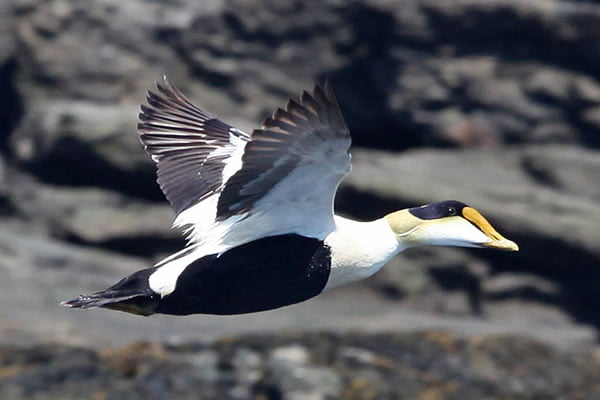SDJV118 FinalReport FY11
SDJV118 InterimReport FY10
SDJV118 InterimReport FY09
Relationships between breeding, molting, and wintering sites of Common Eiders (Somateria mollissima dresseri)

Project Number: 118
Year Funded: 2009
Lead Institution(s): University of Montreal, Quebec, University Saint-Anne, ECCC
Project Lead: Jean-Francois Giroux
Collaborator(s):
Location: Atlantic Flyway
Focal Species: Common Eider (Somateria mollissima)
Project Description: The American Common Eider (Somateria mollissima dresseri) is the most hunted sea duck in eastern North America, yet the impacts of hunting on the population dynamics of this eider are unknown. Affiliations between breeding, molting, and wintering sites must be delineated so that population structure is understood and harvest management strategies are defined for S. m. dresseri. Telemetry and band recovery information indicate that at least some eiders breeding across the range of S. m. dresseri use common molting and wintering sites, suggesting that this subspecies can be managed as one population. However, the proportion of females from each breeding colony that use common molting regions has not been quantified, and the origins of harvested adults (e.g., their molting region) and juveniles are poorly understood. Stable isotopes are useful tools for quantifying the origins of Anatinae. The aim of our study is to evaluate the potential use of isotope signatures from growing ninth primaries of S. m. dresseri for delineating the major molting and rearing regions throughout the range of this eider: 1) southern Labrador, 2) St. Lawrence Estuary (SLE, north and south shores), 3) upper Gulf of St. Lawrence (GSL), and 4) Maine (ME). Accordingly, this information may provide a basis for quantifying the origins of breeding, staging, and wintering birds.
Project Reports:
